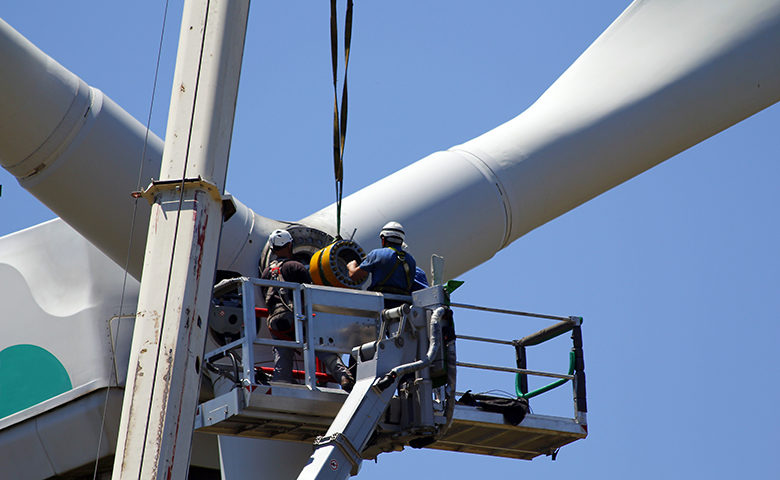Wind turbines vary in size and height, and workers tasked with maintenance or electric duties may be required to perform their jobs at any height. Although wind power is a relatively new sector, the work hazards related to it are not unique.
Risk of falling, slipping, or being dragged down by heavy equipment are only a handful of possible dangers. And the hazards of working on wind turbines can be exacerbated by strong winds or improper PPE.
With that said, these issues can all be addressed according to the same regulations and best practices that apply to other sectors and industries in relation to working at heights.
Installation
When a wind turbine is still in the installation phase, employers are required to use guardrail systems, safety nets or personal fall arrest systems as per OSHA construction safety standards. Additionally, people working at heights must be trained in practical fall prevention and fall arrest techniques.
Employers have to provide relevant PPE and training and remain vigilant to ensure that workers use the equipment and never become complacent about it. This is also why workers must be well-informed about the selection, maintenance and use of any gear and equipment required. The more involved they are in its selection and informed about its maintenance, the more likely workers are to use the equipment correctly.
Maintenance
Because maintenance falls under OSHA general standards rather than construction safety standards, a railing is required for fall hazards of 4 feet or more. However, standard railings are not always available for use when maintaining wind turbines. In such instances, safety nets or personal fall arrest systems can also be used.
Fixed ladders may be used to climb the turbine towers, but if such a ladder is more than 24 feet high, it comes with a list of requirements, such as landing platforms, rest platforms and personal arrest systems.
Falling tools
One of the many hazards of working at heights is posed by falling tools, which are responsible for numerous serious injuries and fatalities each year. They also damage equipment and force employees to stop work just to retrieve the dropped object (which in the case of a wind turbine can mean a substantial delay).
On construction sites, toeboards and nets are used to prevent tools from falling or to catch them once they do. But when working on wind turbines, tethered tools are a good solution because they can be connected to a worker. But tools over five pounds should be secured to a fixed structure or anchor point due to the serious potential for heavy tools to cause injury or pull someone off.
Additional factors
It’s worth considering human factors, such as complacency or rushing, that are involved in making work conditions more hazardous. These and other states of mind can influence worker behavior and negatively affect their safety. For example, workers are more likely to overlook or ignore a crucial detail when fatigued or in a rush.
This is why it’s important to add human factors safety training to any wind turbine safety program. Good human factors training addresses human error without blaming workers. Instead, it aims to help them learn how to recognize and account for states of mind that could lead to them to make a costly mistake.
When employees in the wind-energy industry have access to the right PPE and other safety equipment, are given human factors training, and the company follows best practices for working at heights, they’re much more likely to stay safe and productive. These factors all form a safety net that will help people working at heights avoid a potentially fatal fall.

